Unfortunately, not all recipes have clear instructions for new bakers, and sometimes what seems like a minor detail makes a huge difference when baking. You've found a cookie recipe that you want to try, but you aren't sure if you need to flatten your cookie dough before baking. We have some valuable information to help with the baking process.
Whether or not you flatten your cookies before baking depends upon the ingredients in your recipe and the result you want from your finished cookies. Most cookie dough spreads while baking as the fat melts because the formula is designed for this to happen. However, some recipes don't spread, so they require that you flatten the dough before baking. Otherwise, you will have cookies that are puffy and unevenly cooked.
Keep reading to find out more about the science behind cookie baking so you know how to turn your cookie dough into the perfect cookies for you. We will take a closer look at certain cookies to see why they don't spread on their own. Finally, we will answer a few specific questions to provide tips and tricks about the cookie baking process.

The Science of Cookie Baking
Many people easily recognize the artistic side of cookie baking and never realize the science behind it all. Baking involves chemistry and physics. First, following a precise set of ingredients and instructions ensures that the result is consistent. Second, chemical and physical reactions occur between the common ingredients resulting in a delicious end product.
What does this mean to you at home? Understanding how the ingredients function in a recipe helps you avoid unwanted surprises when your cookies come out of the oven. This knowledge determines if you need to flatten your cookies before baking or if the dough will naturally spread because of the scientific reactions occurring within the ingredients.
Most cookie recipes have certain ingredients in common: butter, sugar, eggs, flour, and fat. Each one has an important function and plays a role in spreading the cookie dough while baking.
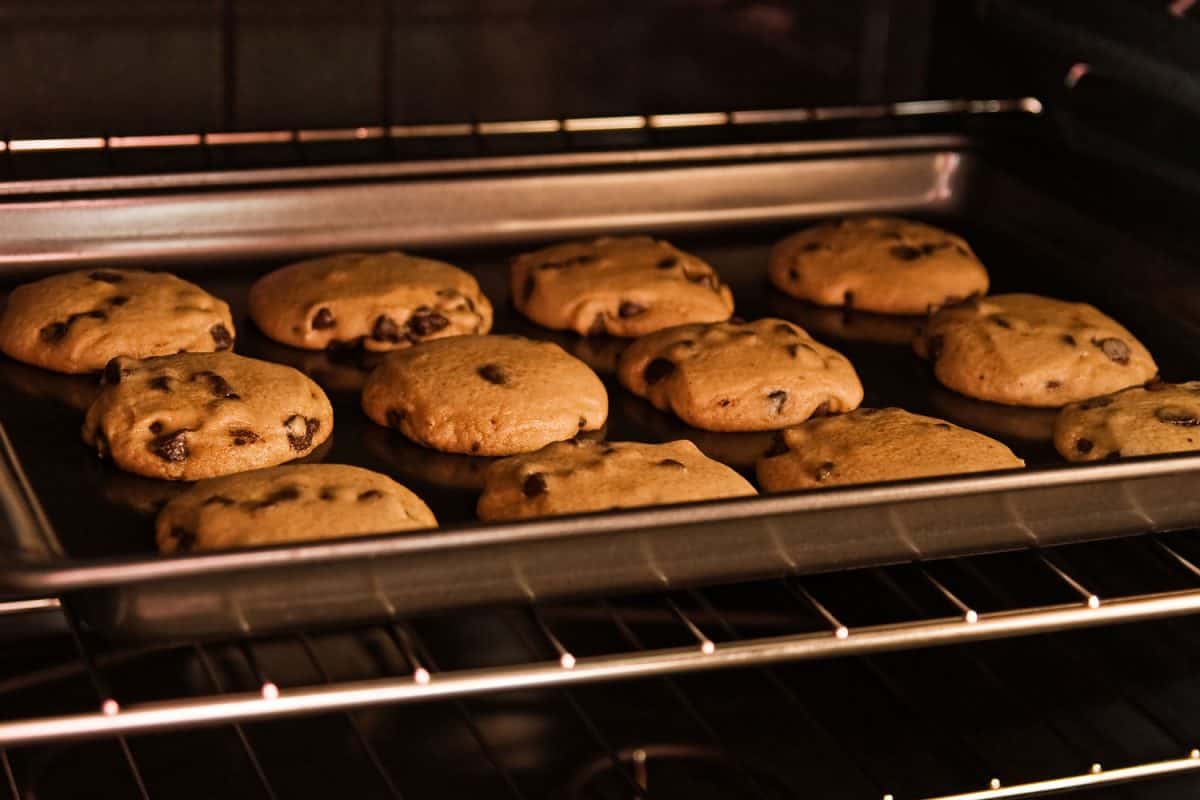
What ingredient makes cookies flatten?
Cookie recipes are formulas with a balanced butter, sugar, flour, eggs, and fat ratio. If your cookies are too flat after baking, these are the ingredients you need to adjust.
Butter
Butter has to be at the right temperature for your recipe, so you must follow the specific directions listed in your recipe. Many recipes call for butter that is at room temperature, but others call for melted butter. If your recipe calls for room temperature butter, this means that it needs to sit out on the counter for a while before you attempt to mix the ingredients in your recipe.
Room temperature butter should be soft but not squishy. A simple way to test your butter is to touch it with your finger, and if it easily allows a soft ident, it is ready to use.
Another important thing to remember is that not all butter has the same water content. The varying water content will affect the moisture content and make a difference in how your cookies spread.
Sugar
We know that sugar adds sweetness to recipes, but it also adds moisture. When cookie dough is too dry, it won't spread properly. The more sugar, the more the cookie dough will spread. Generally, the sugar and flour content should be equal but with slightly more flour than sugar.
The creaming process also affects how a cookie spreads. If you overbeat the butter and sugar, too much air gets into the cookie dough. The aerated dough will rise and then fall in the oven, leaving you with a flat cookie.
Flour
Flour forms the structure of a cookie. Too much flour in a recipe will keep your cookies from spreading because there is more structure in the dough. It will also make your cookies taste unpleasant because the flour to sugar ratio is unequal.
Eggs
Eggs are a binding agent that gives cookies a creamy texture. The more eggs in a cookie recipe, the more it will rise and the less it will spread. You can manipulate a recipe by omitting the egg whites for a chewier cookie and using only the egg white for a crispier cookie. Eggs are also one of the wet ingredients, so be sure to use the size of an egg that your recipe indicates.
Fat
The fat in cookie dough, whether it be butter, oil, or a solid fat like Crisco or lard, coats the proteins in the flour, slowing the gluten formation. Fats also tenderize and determine how chewy or crispy the cookie will be. When the ratio of fat to flour is off, the structure of the baked cookie will be affected. Generally, there should be twice as much flour as fat.
Which cookies need flattening before baking?
Let's look at a couple of different types of common cookies to see which ones need flattening before you bake them.
Sugar Cookies
There's a reason that sugar cookie dough is the most common dough used when making shaped cookies from cookie cutters. You probably thought you were rolling out the dough to have a flat sheet to cut out shapes, and that's true, but you're also flattening the dough so that it will bake more evenly. Sugar cookie dough not flattened first will be puffy but still delicious.
If you need cookie cutters, check out this assortment by Wilton.
Click here to find it here on Amazon.
Peanut Butter
Most people are familiar with the fork marks or crisscross pattern on top of peanut butter cookies, but most people don't know the purpose. It is more than just decoration. Peanut butter cookie dough is usually rolled into balls. Also, it is dense and won't spread like other cookie dough recipes. Therefore, a fork is the standard tool used to flatten the dough into the traditional round cookie shape, helping it bake more evenly.
Snickerdoodles
Snickerdoodles are another cookie in which the dough is traditionally rolled into balls and then rolled in a cinnamon-sugar mix. Most recipes suggest that you flatten the dough balls before baking. In general, if you roll the cookie dough into balls, then your cookie dough probably needs to be flattened before baking.
However, they are your cookies. If you like your cookies to be puffy and thick in the center, then leave them alone. Bake a tester cookie before baking a whole batch if you aren't sure how your cookies will turn out. Then you have an opportunity to make adjustments before you are stuck with a whole bunch of cookies that aren't what you expected.
Does Parchment Paper Keep Cookies from Spreading?
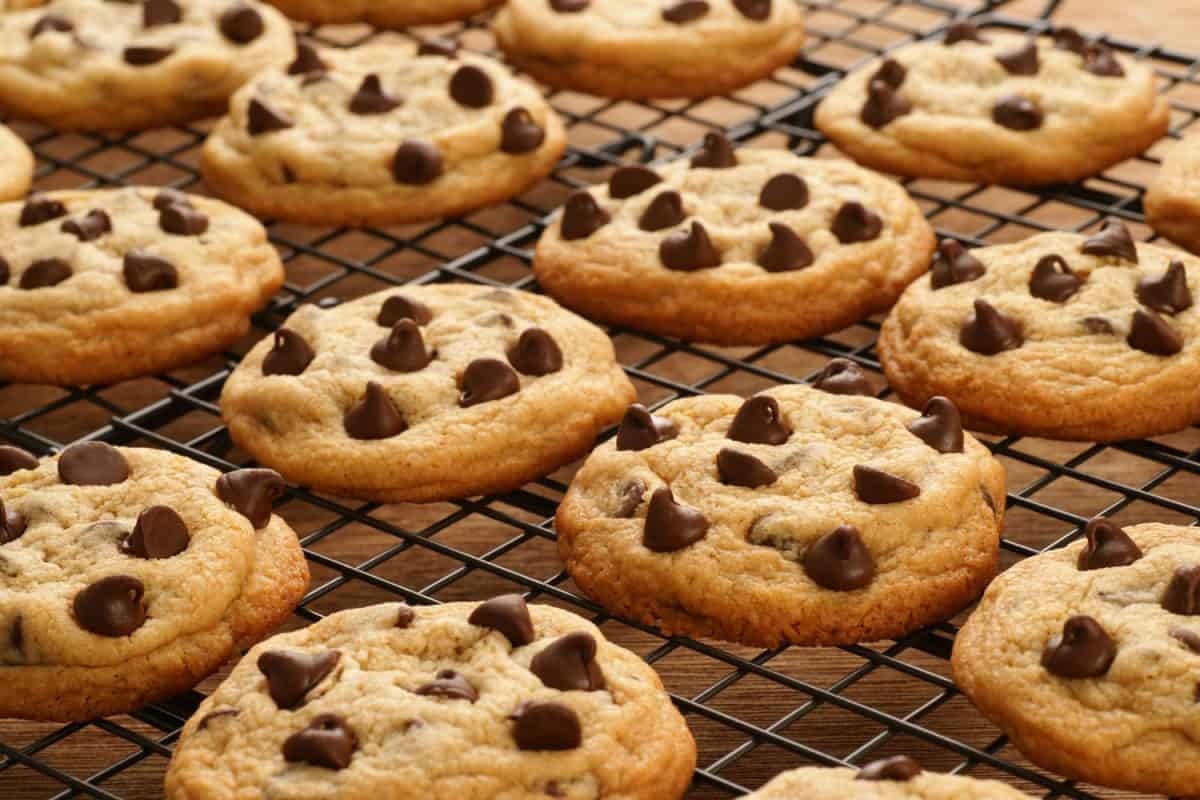
Parchment paper is a great tool to have in your kitchen when baking cookies. It helps cookies bake more evenly, but more importantly, it's better than a greased pan to keep cookies from sticking. While a greased pan does prevent sticking, a hot greased pan promotes the spreading of cookie dough while baking.
Lining your pan with parchment paper rather than greasing it still keeps the cookies from sticking to the pan, but it also creates friction which helps cookies keep their shape rather than spreading.
If you haven't used parchment paper, consider these pre-cut sheets perfect for 9x13 cookie sheets.
Click here to find it here on Amazon.
How Long Should you Chill Cookie Dough?
Chilling cookie dough before baking allows the fats to solidify, which slows down the spreading process. It also allows the flour to become fully incorporated with the sugar and hydrated. It also lets the enzymes in the flour break down to support browning.
The dough should chill in the refrigerator for approximately 2 hours but no more than 24 hours. If your dough chills for too long, it gets too hard. When this happens, your cookies may not spread at all, so you should let the dough come back to room temperature.
If your recipe calls for melted butter rather than room temperature butter, you need to chill the dough so that the fats will solidify before baking. If not, your cookies will spread more than usual and be flat.
What Should Cookie Batter Look Like?

There's no one rule for cookie dough consistency because it varies by recipe and final baked cookie. However, your dough should be stiff enough to scoop. If the recipe calls for rolled balls, then the dough needs to be more rigid so you can handle it and form it a ball that will maintain its shape. However, it shouldn't be too stiff because that means it has too much flour.
To see it, check out this YouTube video.
In Closing
Baking is a combination of art and science. Therefore, the ingredients and recipe details make a difference in the final cookie. Some cookie doughs need flattening, while some do not.
For even more tips and tricks about cookie baking, consider reading At What Temperature Should You Bake Cookies?
Also, check out this article about Should You Melt Butter When Making Cookies And Cake?



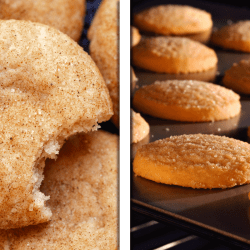
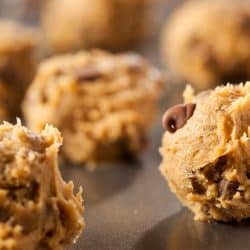


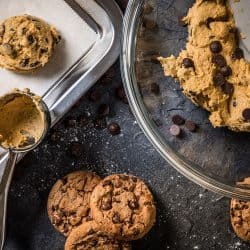
![Chocolate cookies in a glass jars, Do Cookie Jars Keep Cookies Fresh? [Inc. special tips]](https://kitchenseer.com/wp-content/uploads/2020/08/Chocolate-cookies-in-a-glass-jar-250x250.jpg)